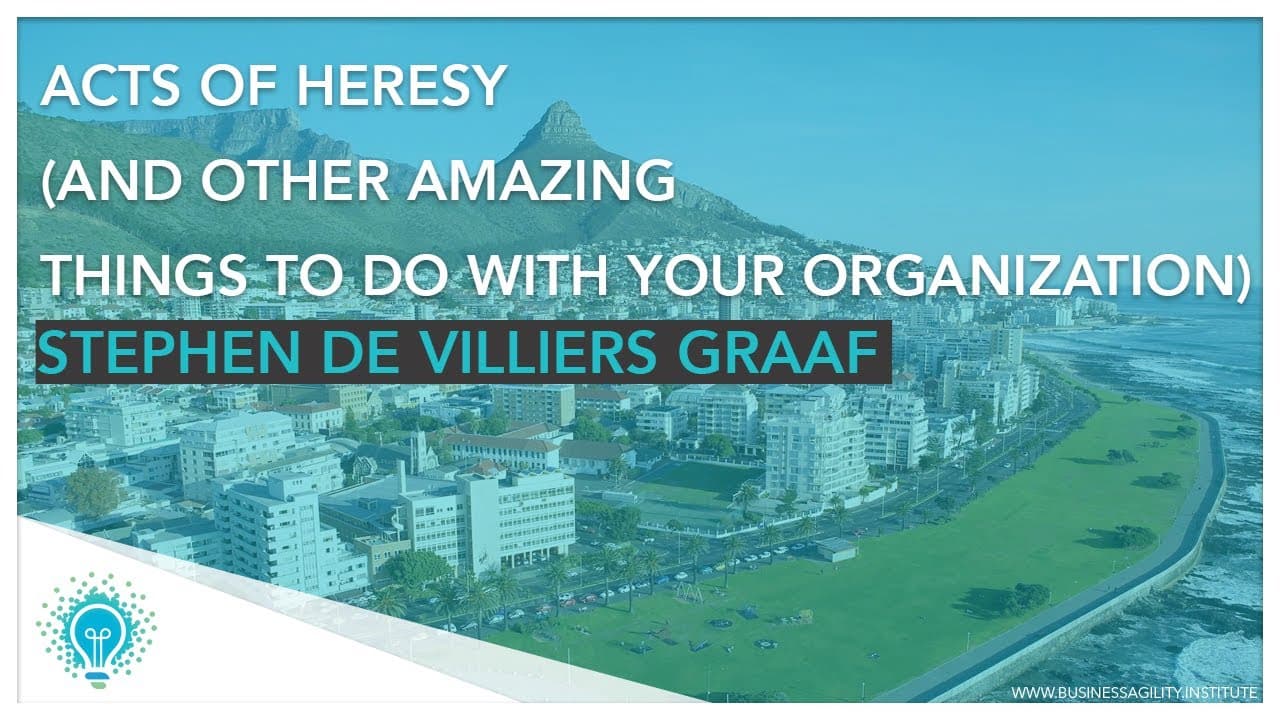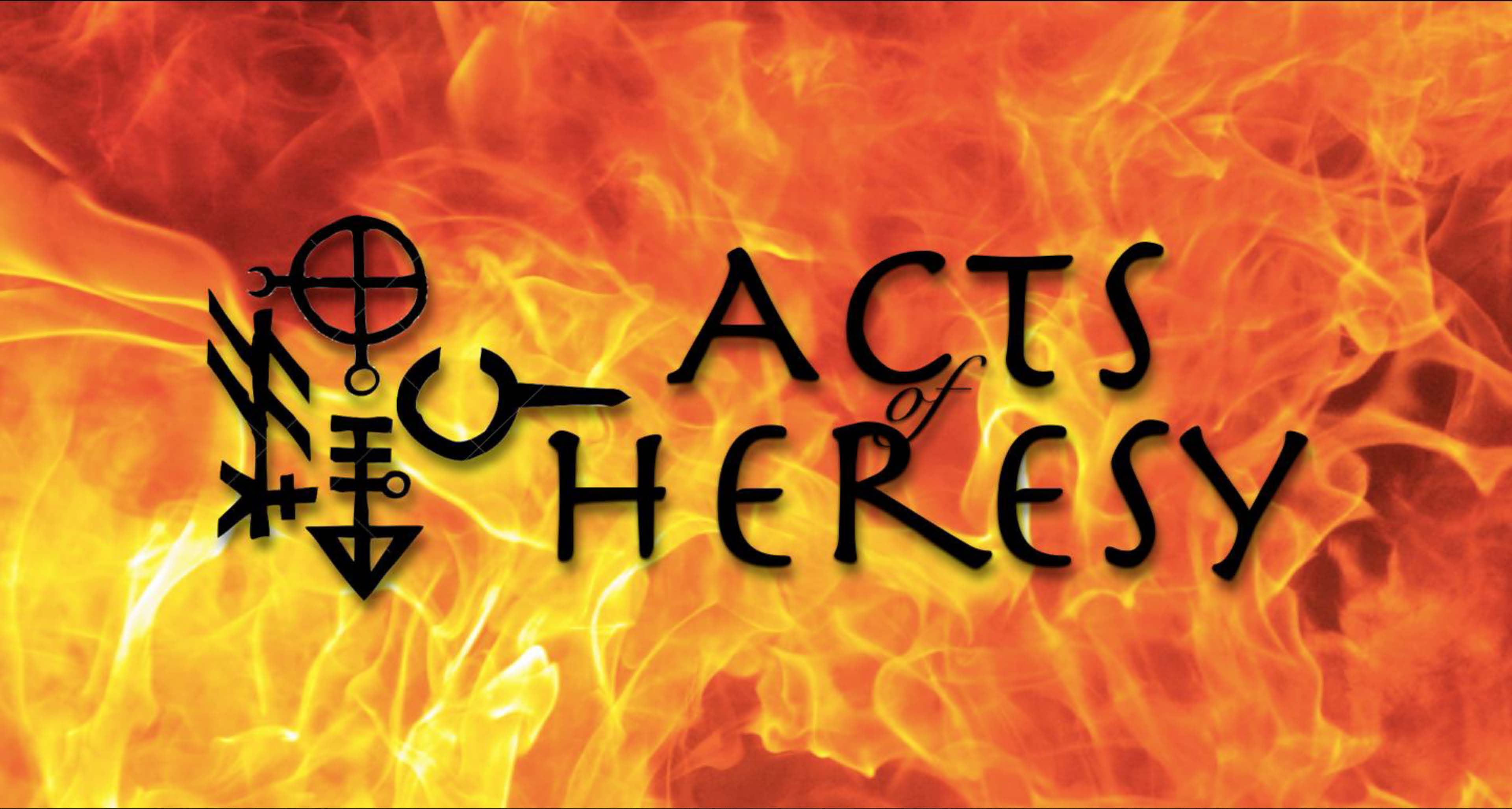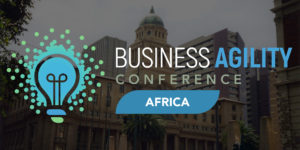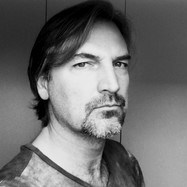I had quite a lot of fun putting this one together, and I had a few heart attacks as well. While setting up, I encountered a technical issue with my notes because, two days ago, I was challenged on one of the pivotal ideas in this presentation. I had to rethink the whole thing—but I'll get to that because it's actually in the presentation.
Acts of heresy—things that can possibly get you into trouble. I've already been introduced, so I won’t go into that again. As a methodologist and a coach, I am deeply interested in ways of working and how they create opportunities for value, information, and efficiency to flow through a business and its people.
Gravity Works. The story behind that name comes from a woman hiking in the Rockies. She walked through a parking lot and passed a climber’s van with a sticker that said, "Gravity Works." If you're a climber, that’s something you always keep in mind—no matter how well you prepare, if you make a mistake, gravity will work. The same applies to transformative organizations. Change happens; it is unavoidable. No matter what you do, change will happen.
Heresy— a belief or opinion contrary to orthodox doctrine. The origin of the word is from the Greek "choice" or "to choose." You don’t become a heretic by accident—it is a conscious choice. When you make that choice, you start believing something that is not widely accepted. That is where magic happens. Some of the most incredible moments in human history came from people who had ideas that the rest of the world hadn’t seen yet. They had the courage to run with them.
What is the most profound act of heresy? Galileo immediately comes to mind. In 1633, he was summoned to the Vatican for his heretical belief that the Earth was not the center of the universe, but instead, revolved around the Sun. The prevailing belief was that Earth was the irrefutable center of the universe. Under the threat of torture or death, Galileo recanted and promised never to speak of it again. He was confined to his home for the last three years of his life. However, as he left the Vatican, he is said to have muttered, "And yet it moves." It took 300 years for the church to admit that Galileo was right.
The problem is that these incredible, earth-shattering ideas are hidden behind strong, ingrained beliefs. To challenge them, you must be brave because you will be branded a heretic. Mark Twain put it best: "It’s not what you don’t know that gets you into trouble. It’s what you believe with your whole heart that isn’t so." The things we hold onto the tightest are the things we must examine the closest.
So, here are my five heresies. Hopefully, I won’t be burned at the stake for these, but I am willing to try.
Heresy #1: Agile vs. Agility
Agile and agility are very different things. One is what you can buy; the other is what you must earn. We have lost our way with this. I came across a quote, "There is no fate worse than that of an enlightened slave." It made me think. What does it mean to move from an enlightened slave to just enlightenment?
Claude Monet, the genius painter, grew his gardens before he painted them. He knew what it felt like to put his hands into the soil. He understood the scent, the texture of the leaves, the way the light cast shadows. That is why his paintings are timeless—his work wasn’t just technical skill; it was lived experience. You can’t buy that passion or expertise—you have to earn it.
Today, our industry places too much emphasis on certifications and accreditations. What is more valuable—the twenty minutes it takes to pass an SPC exam, or the decade of mistakes and experience in transformative environments? No-brainer. The exam gives a credential; experience teaches you the hard lessons.
Heresy #2: Authority vs. Autonomy
Autonomy without purpose is just a vacation. Without focus and boundaries, autonomy is meaningless. I once coached a large digital team where half the floor used JIRA, and the other half used Azure DevOps. Aggregating data was a nightmare. When I asked why they hadn’t made a decision, they said, "The teams are autonomous; they can choose what they want." That’s not autonomy—that’s an excuse for stasis. Leadership must set boundaries and make decisions. If you’re wrong, you’ll learn. But indecision is worse than making the wrong choice.
Heresy #3: Facts vs. Fables
"Agile is a journey." No, it’s not. "Agility is a destination." No, it’s not. There is no end point; agility is a state of being. A bank executive once told me, "We want to be the best retail bank in the world." That’s not a goal; that’s a state of being. You don’t "achieve" agility—you maintain it through constant effort and decisions. The key question: are you better than yesterday? Keep improving, and sooner or later, you will be exceptional.
Heresy #4: Hierarchy vs. Networks
Hierarchies create separation. Your org chart is not how work flows through your organization. The visible structure is the hierarchy, but the requisite structure is what makes value flow. A senior executive once asked why teams weren’t working 24/7 to save a billion-dollar project. I asked if he was available for 3 a.m. calls. Silence. Leadership is not about barking orders; it’s about support and connection.
Heresy #5: Stuck in Bat Country
Many organizations sit in "bat country"—halfway between old ways and transformation, unsure of which way to go. You can’t copy Spotify, Google, or Netflix. Every company must find its own way. There is no blueprint. You can’t install agility; you must build it. And you cannot lead anyone anywhere you are unwilling to go yourself.
Speed, quality, collaboration, purpose—these are byproducts of discipline, hard work, and mistakes. You cannot buy them or certify them. So stop trying to buy agility. Stop trying to "empower teams"—instead, give them purpose, boundaries, and support. Stop paying attention to the org chart and focus on the real structure of how work gets done.
Define yourself by what you love. Make decisions that simplify processes, improve delivery, and make people’s lives better. That is agility.





